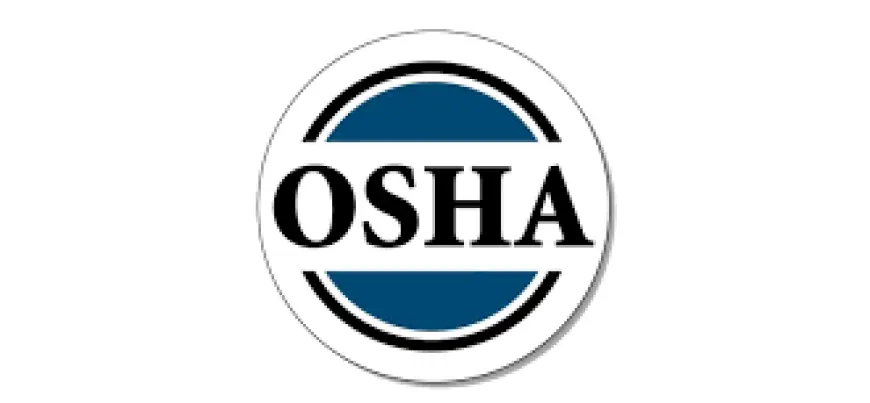The Future of PPE Are Smart Wearables the Next OSHA Standard?
Explore how smart wearables are transforming PPE and workplace safety. Stay ahead with an OSHA Certificate and training on modern safety technologies.

Personal Protective Equipment (PPE) has always been a critical component of workplace safety, ensuring that employees remain protected from occupational hazards. As technology evolves, smart wearables are emerging as the next frontier in workplace safety. These innovative devices are designed to enhance protection, improve monitoring, and ensure compliance with safety regulations. The question now arises: Will smart wearables become the next OSHA Certificate standard?
For businesses seeking to stay ahead in workplace safety, obtaining an OSHA Certificate is essential. It provides a thorough understanding of regulatory requirements, including how PPE should be used to minimize risks. Employers can also benefit from enrolling their workforce in an OSHA Course in Pakistan, which offers training on modern safety protocols, including the integration of advanced PPE into workplace safety programs.
The Evolution of PPE in Workplace Safety
1. Traditional PPE vs. Smart Wearables
Traditional PPE includes hard hats, gloves, protective eyewear, and high-visibility clothing. While these have been effective, they lack the ability to provide real-time monitoring and data collection. Smart wearables, on the other hand, incorporate technology to:
-
Monitor vital signs such as heart rate and body temperature
-
Detect hazardous environmental conditions
-
Alert workers and supervisors in case of danger
-
Improve communication between team members in high-risk environments
Businesses that prioritize safety should consider training their staff through an OSHA Certificate program to ensure proper use and compliance with modern PPE standards.
2. Types of Smart Wearables in PPE
With advancements in technology, various smart wearables have been developed to enhance workplace safety. Some of the most notable ones include:
-
Smart Helmets: Equipped with augmented reality (AR) displays, sensors, and real-time communication features.
-
Smart Glasses: Provide hands-free access to important safety information.
-
Wearable Sensors: Detect exposure to harmful substances, extreme temperatures, or fatigue levels.
-
Exoskeletons: Reduce strain on workers by providing mechanical support.
Enrolling in an OSHA Course in Pakistan can help workers and supervisors understand how to implement and use these smart wearables effectively in the workplace.
The Role of OSHA in Regulating Smart PPE
1. Current OSHA Standards on PPE
OSHA has long required employers to provide adequate PPE for workers in hazardous environments. Current regulations focus on:
-
Proper selection and use of PPE
-
Regular maintenance and inspection
-
Training employees on PPE usage
However, with the emergence of smart wearables, OSHA may soon introduce new guidelines to ensure their safe and effective implementation.
2. Potential OSHA Standards for Smart PPE
As smart wearables become more common, OSHA may update its regulations to include:
-
Data Privacy Protection: Ensuring that employee monitoring respects privacy laws.
-
Interoperability Requirements: Making sure different wearables can communicate with safety systems.
-
Mandatory Smart PPE Training: Workers may be required to complete an OSHA Certificate to ensure they understand how to use smart PPE effectively.
Employers looking to prepare for these changes can benefit from an OSHA Course in Pakistan, which covers PPE advancements and compliance strategies.
Benefits of Smart Wearables in Workplace Safety
1. Improved Hazard Detection and Prevention
Smart wearables can detect potential hazards before they become life-threatening. Examples include:
-
Gas sensors alerting workers to toxic fumes
-
Motion sensors detecting slips, trips, or falls
-
Heat sensors warning of excessive temperatures
2. Enhanced Worker Productivity and Safety Compliance
Smart PPE not only protects workers but also increases efficiency by reducing downtime due to injuries. Compliance with OSHA regulations can be streamlined with automated reporting and real-time monitoring.
3. Real-Time Communication and Emergency Response
In high-risk industries such as construction and manufacturing, real-time alerts can mean the difference between life and death. Smart helmets and connected devices allow immediate response to emergencies.
By acquiring an OSHA Certificate, employees and supervisors can better understand how to utilize smart PPE to its full potential.
Challenges in Implementing Smart PPE
1. Cost and Accessibility
One of the main concerns with smart PPE is the initial investment. Advanced technology can be expensive, making it less accessible for small businesses. However, as demand grows, costs are expected to decrease.
2. Data Privacy Concerns
With wearables constantly monitoring workers, concerns over data privacy arise. Employers must ensure compliance with both safety and privacy regulations to maintain trust among employees.
3. Need for Standardized Training
Since smart PPE is relatively new, standardized training is necessary to ensure workers understand its proper use. Taking an OSHA Course in Pakistan can help organizations integrate smart wearables effectively into their safety programs.
How Businesses Can Prepare for the Future of PPE
1. Stay Informed About OSHA Regulations
Employers should keep up to date with any changes in OSHA regulations regarding smart wearables. Obtaining an OSHA Certificate can help businesses understand evolving safety requirements.
2. Invest in Employee Training
To ensure that workers are equipped with the knowledge to use smart PPE, employers should enroll them in relevant courses such as an OSHA Course in Pakistan. Training programs cover:
-
Proper usage of smart wearables
-
Maintenance and compliance guidelines
-
Understanding potential risks and benefits
3. Conduct Workplace Safety Assessments
Regular workplace assessments help identify the best PPE solutions for specific job roles. Businesses should evaluate:
-
Which smart wearables suit their industry needs
-
How to integrate technology into their existing safety plans
-
The cost-benefit ratio of upgrading traditional PPE
Conclusion
The future of PPE is shifting toward smart wearables, offering advanced protection, hazard detection, and real-time communication. While OSHA has yet to standardize these innovations, businesses should prepare by obtaining an OSHA Certificate and ensuring their workforce is adequately trained. Enrolling in an OSHA Course in Pakistan can provide valuable insights into the latest safety technologies and regulatory expectations.
As these advancements continue, organizations that invest in smart PPE and proper training will be ahead of the curve, ensuring a safer, more compliant, and productive workplace.
What's Your Reaction?
 Like
0
Like
0
 Dislike
0
Dislike
0
 Love
0
Love
0
 Funny
0
Funny
0
 Angry
0
Angry
0
 Sad
0
Sad
0
 Wow
0
Wow
0

























































